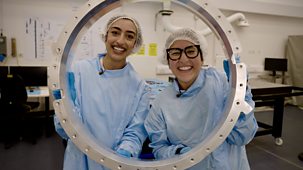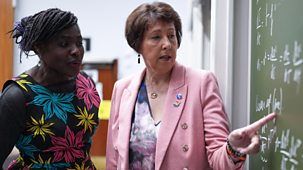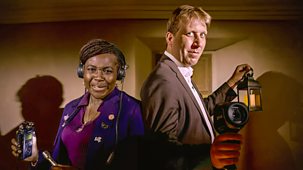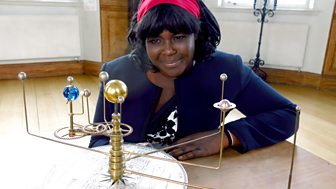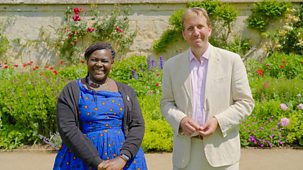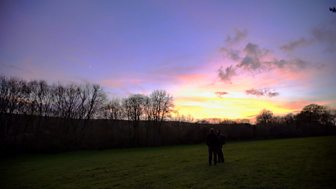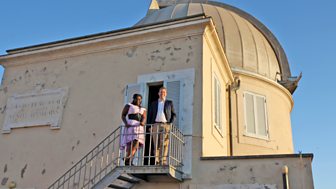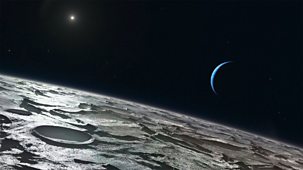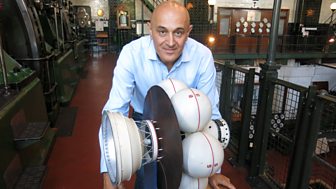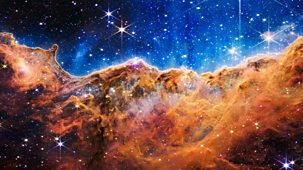
The James Webb Road Trip
On 12 July 2022, the Sky at Night joined the rest of the world to watch as the James Webb Space Telescope released its long-awaited first images. And it didn’t disappoint. Stars and galaxies were revealed in such detail that they blew even the most experienced astronomers away. However, as spectacular as these images were, it was the data that they represented that really excited the scientists watching.\n\nChris Lintott travels around the country, meeting some of the scientists getting their hands on the very first batches of data coming from the JWST. His first stop is Professor Andy Bunker at the University of Oxford, who is pushing the world’s newest space telescope to its limits to look for some of the first stars and galaxies formed after the Big Bang.\n\nChris also meets Dr Mikako Matsuura of Cardiff University. She is studying the gas structures that dying stars exude as they reach the end of their lives. Mikako explains how the incredible infrared capabilities of the JWST allow her to probe the discs of dust and gas around nebulae and reveal the surprising conditions that form them.\n\nChris then heads on to the University of Bristol to visit Dr Hannah Wakeford, who is incredibly excited by her data, which is revealing previously unknown secrets from the atmospheres of exoplanets orbiting far-flung stars. Hannah’s method of studying exoplanets uses the JWST to measure the light from a target star as an exoplanet ‘transits’ in front of it, briefly and almost imperceptibly dimming it. It is these incredibly precise measurements, only made possible by the sensitivity of this new supertelescope, that she hopes will change what we know about the atmospheric composition of these distant worlds.\n\nFinally, Chris visits Professor Leigh Fletcher at the University of Leicester. Leigh is using the space telescope to look a little closer to home and shows Chris the latest images of Jupiter revealed in a whole new light by the JWST’s infrared data. He explains to Chris the difficulties of capturing large bright objects in the telescope’s small field of view, and what his plans are for studying our solar system’s gas giants. \n\nMeanwhile, Maggie Aderin-Pocock gives a JWST masterclass in the studio. Why is this telescope so revolutionary, and how exactly does it work? She looks at why the JWST is observing light from the infrared part of the electromagnetic spectrum, and also why scientists chose to place the telescope in a location so far from Earth that we could not fix it if something went wrong. Maggie also explores the instruments that call the telescope home and takes a closer look at some of the tricks they have up their sleeves.
Source: BBC 4
Most recent episodes of The Sky at Night
The Sky At Night
Asteroid Strike?
The team explore one of the biggest stories in space news, the ‘city killer’ asteroid 2024 YR4. First observed on 27 December 2024, it soon became one of the biggest ...
14-04-2025
BBC 4
The Sky At Night
Ancestral Skies
This month, The Sky at Night teams up with BBC Ideas to discover the secrets of archaeology and astronomy and to reflect on our ancestral skies. \n\nThroughout history and acros ...
14-11-2024
BBC 4
The Sky At Night
Question Time Special
Get ready for The Sky at Night’s annual Question Time Special, where viewers get the opportunity to ask the questions they have always wanted answered about our universe.\ ...
08-10-2024
BBC 4
The Sky At Night
2075: Our Place In Space
The Sky at Night is embarking on a journey into the future as we explore how space will revolutionise life on Earth over the next 50 years. As humanity's reach extends into the ...
11-09-2024
BBC 4
The Sky At Night
Nicky, Nasa And The Next Frontier
In this Sky at Night special, the team talk to Dr Nicola Fox, NASA’s head of science, whose life began in the UK.\n\nPresenter Chris Lintott chats to Nicky about her early ...
15-08-2024
BBC 4
The Sky At Night
Webb Telescope: The Story So Far
In July 2022, the James Webb Space Telescope released its first images. They were visually stunning, and it was clear they provided more detail of stars, galaxies and planets th ...
11-07-2024
BBC 4
The Sky At Night
Cosmic Ghosts
This month, The Sky at Night has a spooky twist. Across the universe, there are hidden objects that we can’t see, but astronomers and scientists still believe they’r ...
13-06-2024
BBC 4
The Sky At Night
Hiding In Starlight
Total solar eclipses, like the one seen last month in North America, allow us to see details of the Sun that can’t be seen at any other time. So, this month, The Sky at Ni ...
16-05-2024
BBC 4
The Sky At Night
Space Rock Return
The Sky at Night is back for a brand new series, and this month it is delving into Nasa’s OSIRIS-REx mission, which last year brought back a sample from the near-Earth ast ...
11-04-2024
BBC 4
Most popular episodes of The Sky at Night
The Sky At Night
Asteroid Strike?
The team explore one of the biggest stories in space news, the ‘city killer’ asteroid 2024 YR4. First observed on 27 December 2024, it soon became one of the biggest ...
14-04-2025
BBC 4
The Sky At Night
Question Time
A special ‘Question Time’ edition of the programme, recorded at the Civic Theatre, Chelmsford, as part of the British Science Association’s annual science fest ...
22-09-2021
BBC 4
The Sky At Night
The Sky At Day
The British weather is often the enemy of stargazers up and down the country. A forecast of a couple of hours of cloud cover will disappoint even the most determined amateur ast ...
13-07-2022
BBC 4
The Sky At Night
Wonders Of The Night Sky
The Sky at Night celebrates one of the most profound, moving and enjoyable activities there is - the ancient art of looking up, studying and marvelling at the night sky. The pro ...
10-12-2017
BBC 4
The Sky At Night
Mapping The Milky Way
The Gaia space telescope is not just create the ultimate star map of the Milky Way. It is also showing us our galaxy's past and how it will change in the future.\n\nThe Sky at N ...
12-05-2021
BBC 4
The Sky At Night
The Forgotten Solar System
Of the 100 probes that have been sent out into space, only one probe - Voyager 2 in 1989 - has ever sent back any information about the solar system's outer planets. From afar, ...
12-10-2021
BBC 4





